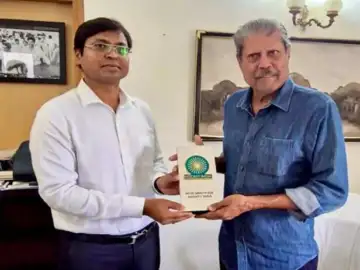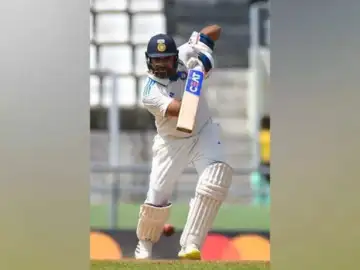To honour its legends, the Board of Control for Cricket in India (BCCI) provides a structured pension scheme
For many cricketers, the transition from adrenaline-fueled dressing rooms to the calm of retirement can seem like a stark difference.
In 2022, the BCCI grabbed attention by revealing a significant increase in pensions, doubling payments across various categories and broadening its assistance to over 900 beneficiaries, including players and officials. But how much do Indian cricketers actually earn, and what implications does this system have for the sportThe 2022 Pension Overhaul
On June 1, 2022, the BCCI approved a sweeping revision in pensions. More than 75 per cent of beneficiaries saw their monthly support double, a move that was praised widely within the cricket fraternity.
Here’s how the revised structure looks:
- First-Class Men’s Players: ₹30,000 per month (earlier ₹15,000)
- Former Test Players (Lower Tier): ₹60,000 (earlier ₹37,500)
- Former Test Players (Upper Tier): ₹70,000 (earlier ₹50,000)
- Women International Cricketers: ₹52,500 (earlier ₹30,000)
- Women First-Class (pre-2003 retirees): ₹45,000 (earlier ₹22,500)
This change signaled not just financial relief but recognition for contributions often overlooked in the glare of modern-day cricketing riches.What Do Legends Earn?
 Sachin Tendulkar is considered as the Lord of Indian cricket
Sachin Tendulkar is considered as the Lord of Indian cricket
The revised pension structure means some of India’s biggest cricketing names draw respectable monthly sums:
- Vinod Kambli, who mostly played first-class cricket, receives ₹30,000 per month.
- Test icons like Sachin Tendulkar, Kapil Dev, Sunil Gavaskar, and Sourav Ganguly fall in the top bracket, earning ₹70,000 per month.
- Players such as Yuvraj Singh, in the lower Test tier, draw ₹60,000 per month.
- Women’s cricket stalwarts, including Mithali Raj and Anjum Chopra, are entitled to ₹52,500 per month.
These sums are modest compared to today’s IPL-driven earnings but remain vital, especially for players from earlier generations who played when cricket was not as financially rewarding.State Associations Step In
Beyond the BCCI, several state cricket boards have initiated their own pension schemes to support players who did not qualify for central benefits.
- The Rajasthan Cricket Association offers ₹5,000-7,500 per month to former Ranji players based on matches played.
- The Delhi & District Cricket Association (DDCA) revived its scheme in 2024, providing ₹25,000 per month to ex-players not covered by the BCCI.
These state-level initiatives highlight the uneven financial realities of domestic cricketers and the importance of broader support systems.The Importance of Pensions
 Kapil Dev is a great Indian cricketer
Kapil Dev is a great Indian cricketer
For athletes who played in the 1970s, 80s, and 90s, cricket was a fervor but seldom a secure means of income. Lacking profitable endorsements or T20 leagues, many had to balance jobs outside of cricket to support themselves.
For them, the pension represents more than financial support, it signifies symbolic acknowledgment. Former India captain Kapil Dev once noted that he opted not to utilize his BCCI pension, instead giving it away, as he felt fortunate compared to older players who depend on it for their main support.The Path Forward: Growth and Inclusiveness
Although the BCCI’s pension program is praiseworthy, there are still shortcomings. Many past female cricketers, especially those who participated solely in One-Day Internationals, remain marginalized. Numerous domestic athletes who devoted years to the sport but did not meet the eligibility requirements are now outside the safety net.
Demands for more inclusive changes are increasing in volume. Increasing pensions to encompass a wider range, particularly women and domestic champions, would be a move towards genuinely respecting the varied heritage of Indian cricket.An Action Outside the Game
 BCCI congratulates Rohit Sharma on his retirement from Test cricket
BCCI congratulates Rohit Sharma on his retirement from Test cricket
Currently, almost 900 retired players and umpires benefit from the pension system of the BCCI. Ranging from ₹30,000 for premier cricketers to ₹70,000 for the sport’s top stars, these monthly amounts might not compare to current match fees but highlight one truth: cricket honors its legends.
In a sport progressively characterized by financial achievement, the pension system serves as a significant counterweight. It recognizes that the pillars of Indian cricket were established not only by the wealthy from the IPL period but also by countless players who competed for minimal rewards and great pride.
For them, this monthly acknowledgment is not just a payment, it’s a commitment that the game has not forgotten
Unlock insightful tips and inspiration on personal growth, productivity, and well-being. Stay motivated and updated with the latest at My Life XP.
Frequently Asked Questions (FAQs):
- How much do women cricketers earn as pension?
Around ₹45,000-₹52,500 per month.
- When was the last pension hike announced?
In June 2022, doubling payouts across categories.
- Who provides pensions to Indian cricketers?
The BCCI, along with some state associations.
